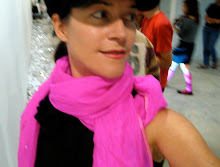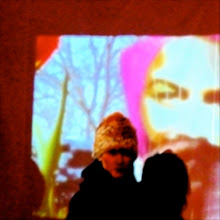My eyes, however strong or weak they may be, can see only a certain distance, and it is within the space encompassed by this distance that I live and move, the line of this horizon constitutes my immediate fate, in great things and in small, from which I can not escape...Now it is by these horizons, within which each of us encloses his senses a if behind prison walls, that we measure the world, we say that this is near and that is far, this is big and that is small, this is hard and that is soft: this measuring we call sensation— and it is all of it an error!By looking down I have a god’s eye view. capturing all that is within the frame. limited only by the rigidity of my self imposed rules. the camera locks my wandering eye. and so I see details I would have missed. a shadow cuts across the frame and has a narrative unintended, yet so much more real than what I planned. I have my lens that captures what my experience misses. is this the role of technology? of the documentarian? to capture the otherwise unnoticed? to trap the invisible? to remind us of what we miss? to rewrite our past? to alter our memories? Inspect my events through my lens please. see though my edits. I cut and trim and subjectify with a desire to share. is this any different from truth?
There are so many issues to capturing. Immediately subjectivity enters the process. It's impossible to be objective with a camera. But then it's impossible to cast an objective gaze. I see where my eye travels. there is much that is leftout, unnoticed. The role of the camera then, in this work is to act as an Argus, to have eyes watching from as many angles as possible. To be multifaceted and wide ranging. to see what I can not see. This manifests itself in my process. My collaborators use cameras, i use a camera, there are more static cameras set up from other angles, and always the overhead is used.
What is presented as evidence remains evidence, whether the observing eye qualifies itself as being subjective or objective. At the core of such a rationale dwells, untouched, the Cartesian division between subject and object which perpetuates a dualistic inside-versus outside, mind-against-matter view of the world. The emphasis is again laid on the power of film to capture reality “out there” for us “in here.” The moment of appropriation and of consumption is either simply ignored or carefully rendered invisible according to the rules of good and bad documentary.— Trinh T. Minh-ha & RenovTheorizing Documentary p.95Stretch — University of Brighton | 2006
an experience in translating
astrid almkhlaafyiNot even the visionary or mystical experience ever lasts very long.On a practical level — a preservation note — the saving from oblivion of these moments is also what motivates much of this research. The ephemeral nature of performance is not an excuse to avoid attempting some kind of documentation. There is far too much of value in these moments — culture, history, creativity, play — to be lost. It is imperative that creatives task themselves with preserving not only tradition but also contemporary live experiments.
It is for art to capture that experience, to offer it to, in the case of literature, its readers; to be, for a secular, materialist culture, some sort of replacement for what the love of god offers in the world of faith.— Salman Rushdie
Herbert Reade Memorial Lecture (February 6, 1990)
“Is Nothing Sacred?”
Lost Histories
Tate Collection 14 November 2003 - 25 January 2004It was only with the invention of photography that performance began to make its mark in the history of art. Prior to this there was no instant means of making a visual record of live events. As film and video equipment became more readily available, artists with access to this technology experimented not only with recording live action but also with the moving images they created.
Many well-known figures in the history of art have been involved in performance during the course of their careers, from scandalous dance performances of the late 1800s to the happenings and actions of the New York loft scene in the 1960s. However the focus on the art object has meant that the ephemeral elements of these artistic practices are often lost or overlooked.And this is the final meaning of work: the extension of human consciousness.
The lesser meaning of work is the achieving of self-preservation.D.H. Lawrence
Study of Thomas Hardy
Phoenix: The Posthumous Papers of D. H. Lawrence, p. 430, (1936)





No comments:
Post a Comment